Mushroome Shetlands?
Forums
OK, not sure what is going on
OK, not sure what is going on but I have now been booted onto Alot search engine twice when I have tried to post....
Anyway, to reiterate, I am not sure where the research on these went to. The colour was popular for five minutes and then, I think doe to the high incidence of chestnuts, died a death.
I am not unhappy, ponies should be bred for conformation, not colour.
If you get both, BONUS, but I did wonder how long it would be before this colour was listed as "rare" ymwhisle
my friend owned a mushroom
my friend owned a mushroom stallion and he proved to have extremely low fertility , she didnt get a single foal from him and at the end of the year the seller took him back , he was small ...27" , I think she said he was very inbred , could that explain the small size and low fertility ?
Diane, I do not believe that
Diane, I do not believe that it is in breeding per se that is the problem.
I think the problem is that people do in breeding for all the wrong reasons, often using sub standard animals, that cause sub standard, and often, small, animals.
I do not know much about QHs, and I know nothing much at all about their pedigrees but I do know that they were bred originally form stock much much smaller than the current animals- as were Arabs, and that the resultant return to small stature in inbred animals could be due to doubling up on the smaller sized ancestors, as opposed to actual inbreeding causing loss of size.
It is possible to selectively breed for almost anything, starting with almost anything- I proved this with mice a few years back- so possibly in a search for a particular colour/type/whatever by inbreeding, they get small size instead???
rabbit I am really
rabbit I am really interested in the history of North American horse so
I am curious about where you think the QH were bred from? Where did the smaller horses come from?
I thought they were in part derived from the Andalusians which the Spanish brought over, hence their athletic ability.
The Appaloosas, on the other hand, seem to have quite a different origin, I think this in part because of their distinctive color but also their build is quite different.
QH sizes
I believe RF is right as the QH (which some say actually originate in my neck of the woods) were bred from native horses (the native Indian ponies were believed to be offspring from Spanish horses - think 13.2hd Assateague and Chincoteague ponies) bred to imported TBs(thought to be from the Godolphin Arabian lines). As these "stock" horses were bred back to the TBs and - according to local lore, TWHs & Standardbreds(reason some QHs are naturally gaited) - they grew into more substantial and heartier performance horses.
Qhs part 2
Oops sorry, saved before finish my thought on the size thing... ymwhisle
Anyway, I believe during those same colonizing decades, the settlers brought ponies over along with the TBs and other species of livestock. These ponies could very easily have been "added" to the QH gene pool (with our without the breeders knowledge... :-? :bounce ).
Just to add a bit to what
Just to add a bit to what critter stated. They were originally used for 1/4 mile racing so any horse that was fast over the quarter mile was considered a "quarter horse" regardless of conformation or breeding. With the western expansion this type of short race remained popular and it was discovered that many of these horses had natural "cow" most likely the result of their Spanish roots. It wasn't until the early 1900's that breeders started to think of "quarter horses" as a separate breed.
The original QH were small,
The original QH were small, against todays monsters, - the stock horses that the "cowboys" used were rarely beyond 15.00hh- I am not sure where the sudden upsurge came from- obviously it started as the need for real working horses declined and the show world took off. It is very similar, I think, to the "Gypsy Vanners"
No Gypsy would have a horse over 15-15.2hh, why would you feed more animal than you need for the job? Most Vanner Cobs were a LOT smaller- around 14.2hh max.
As I understand it, the racing QH's and the working ranch horses became part of a blanket breed covering all sorts and, most unfortunately, introducing the "show" animals as well.
I know a lot of the ranch horses were Mustang or part Mustang, I guess there were not many 16.00hh mustangs around??
This was not due to inbreeding, it was due to environment.
Sorry, this is a bit garbled, I am knackered from farrowing a sow.
Quote:The original QH were
[quote]The original QH were small, against todays monsters[/quote]
This is not entirely true. Many of the original QH's to be registered with the AQHA were greater than 15h. In fact originally the AQHA had a height restriction that no horse under 14.2 could be registered. This is largely the reason why the "Quarter Pony" registries came into being. Since the TB had such a great influence on the early QH it makes sense that many of the original QH's would be in the same height range as the TB.
One example is Joe Hancock 1923 ~ 1943 was 15.3h. He was he most influential sire of roping horses in the AQHA (and probably the APHA as well).
I think one of the reasons
I think one of the reasons for increased size in horses today, period, regardless of breed, has to do with optimizing feed/nutrition. The diaries of Lewis likened the NP horses to fine coursers back home...that being the Eastern states, and that being the 'home' of the English TB...which, even back then, was not exactly a small horse. The PNW area was a cornucopia in comparison to other parts of the US (southwest, for example), and so their horses would have had access to better nutritional food than horses in Texas/Arizona, where there is a lot of scrub land.
Using Assateague/Chincoteague ponies as an example I don't think is a fair one...those horses have limited space/food and, like the Key deer in Florida, may have become smaller over the years as a survival mechanism.
Does breeding by the papers or by anything that has the parts have a part to play in "shrinking" horses? Yep. But I also believe that line breeding (look at all the Poco-linebred cutters and their lack of height) also has a part.
As far as height in the QH,
As far as height in the QH, it depends on the pedigree and purpose. Cow, reining and rope horses are wanted in the 14.2-15.1 range. Our tallest QH stallion is 14.2 1/2. He is foundation bred. The hunter under saddle ones are wanted in the 16 hand range and the WP ones in the 15s.
NZ, our horses are Poco Bueno line bred and they are all about 14.2. Just where we like them. Anything taller gets in the way and is pretty much useless for our purposes.
15 hands for what we do is
15 hands for what we do is too tall so the size isn't an issue here. Only two of our 4 have 2 or more lines to Poco Bueno. Our horse Junior is Hancock and has one line to Poco Bueno on the top and he's 14.2. Tweetie has Poco Bueno/Colonel Freckles, also 14.2 Its the best size for us. My friend's colt is Burt/Oklahoma Star and she'll be lucky if he hits 13.3.
I always liken the
I always liken the Chincoteague ponies with out New Forest ponies- now, take either of those breeds off the forest/island and breed on ordinary pasture and they will shoot up like weeds- I have seen NF ponies go over 14.2hh (or course they are "out of the book") in two generations. And the Forest ponies I have had (and I have had a few) all came in the 12.2hh-13.2hh height- ideal for a crofters pony in a woody area (it is not truly forest) with lots of open scrubland and tussocks- who needs a clumping great horse on footing like that?
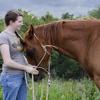
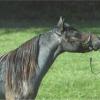
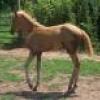

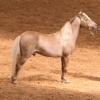
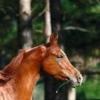

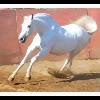
Man thats an old topic, I
Man thats an old topic, I think basically they are an unknown dilution and they tested as chestnut but they look like a black based silver if I remember correctly.